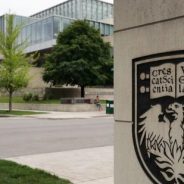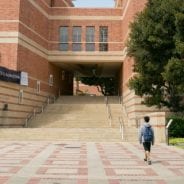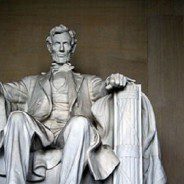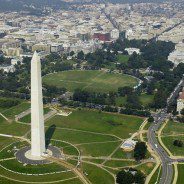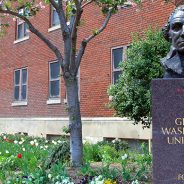Search results for :
Executive MBA
Chicago Booth Executive MBA Program Structure
The University of Chicago Executive MBA at the Booth School of Business has campuses in Chicago, London, and Hong Kong. The program begins in June and runs for 21 months, spanning seven academic quarters. The program begins annually in August.
During the first quarter, Chicago Booth Executive MBA students begin at their home campus in Chicago, London, or Hong Kong with a joint session for incoming students. Quarters two through five cover the core curriculum at that home campus. Between quarters five and six a two-week elective session for all students takes place in Chicago during which students complete between two and four of their elective courses. Students then return to their home campus for quarters six and seven where they finish the core curriculum. Final convocation for all students takes place in Chicago following quarter seven.
Curriculum
During the 21-month Chicago Booth Executive MBA program students take foundational and fundamental courses as well as electives and complete a capstone experience. Students also select from four elective courses to complete their individual course of study.
The preset general management curriculum is designed to improve students’ grounding in fundamental business disciplines like the economics of human relations, the financial business case, writing skills, brand strategy, and negotiation techniques. This curriculum, for example, comprises of:
Foundations – Financial Accounting, Microeconomics, and Statistics courses
Functions – Finance, Marketing, and Operations courses
Management – Decisions, People and Strategy courses
Business Environment – Global Strategy and Economics and Macroeconomics courses
In the electives component of the Executive MBA, students have the opportunity to explore personal career interests more thoroughly. The two-week elective block in the second year of the program allows students to complete between two and four intensive courses on advanced topics such as Entrepreneurial Finance, Investments, Marketing Strategy Simulation, New Product Development, and Applied Game Theory. Some of these courses are organized into tracks, which provide an additional framework to orient study by developing clusters of elective courses in a particular field of interest: capital markets, corporate finance, entrepreneurship, marketing, strategy, or leadership and management. Tracks are not required, however, and students are also allowed to take electives from a range of different subject matters.
Students may choose one of two Capstone offerings. For example, the Integrated Strategic Management Capstone Simulation allows student teams to operate in a market environment. Students will make financing, investment, pricing, production, channel and marketing decisions culminating in final presentations to a panel of judges. This panel values each student company based on accumulated cash flow and future profit potential, which are determined through historical data modeling and statistical analysis.
The second option is the Global New Venture Challenge. This is a course in which teams of students develop an innovative business and business plan and pitch it to peers, faculty, and outside experts in a final all-day presentation format.
Executive MBA Rankings
- U.S. News & World Report: 1
- The Economist: 6
- Financial Times: 7
Class Profile
There were 224 students in the most recent Chicago Booth Executive MBA class, 112 of whom have advanced degrees. Females make up about 26% percent of the student body. There are students from 48 different nationalities in the current student body. The average student age is 37 and the average number of years of work experience is 13. In addition, the average GMAT score is 681 with the average Executive Assessment score being 155.
Careers for Chicago Booth Executive MBA Graduates
Employment reports on previous Booth graduate hiring trends, employers, industries, and functions are available for each of the past five years. An extensive archive of previously successful resumes is available and career newsletters are constantly circulated via email to keep students apprised of up-to-date job postings and career management tactics. The Fisher Career Resources Center (CRC), located in the Gleacher Center, gives students, and alumni an additional researching resource.
Tuition, Scholarships, and Financial Aid
The University of Chicago Booth School of Business Executive MBA program tuition is as follows:
- North America – $194,000 USD
- Asia – HKD 1,355,000 ($172,812 USD)
- Europe – $167,000 USD
Tuition and fees include the price of all academic sessions, course materials, access to teaching assistants, most meals, daily snacks, and specific student activities. For Chicago students the price also includes lodging for the residential weeks in Chicago (two sessions) and in London and Hong Kong (one session each). Hong Kong and London campus students are also responsible for covering the cost of lodging away from their home campus.
Admissions
Each location handles their own admissions processes so the notification timeframe may differ slightly, but generally speaking, applicants can expect to hear via email or mail somewhere between four and six weeks after applying for one of the four admissions deadlines.
To complete an application for Booth’s Executive MBA program, prospective students must submit a completed online application with personal background information, complete a series of varying essay questions (between one and three 1 to 2-page essays may be necessary), a professional resume, two letters of recommendation, transcripts from all post-secondary educational institutions attended, official GMAT or GRE scores (unless granted a waiver*), and a $175 application fee.
*In certain instances, senior-level managers with more than twelve years of management experience or candidates who possess an advanced degree in a quantitative field may be granted an exception from the GMAT/GRE requirements. Candidates who believe they fulfill one of these criteria should speak with an admissions representative about obtaining a testing waiver.
Admissions staff, students, and alumni from the Chicago campus evaluate applications and conduct interviews. The school will additionally grant interviews on an invitation-only basis.
The program requires a high level of English proficiency. The school will assess each candidate’s English ability during the application and interview process. In certain cases, based on these results, applicants will be asked to take the TOEFL exam.
Students must also provide a letter of company support after admission to certify that their company will allow them to attend all class meetings. The letter does not, however, need to provide details of financial support.
2022 Chicago Booth Executive MBA Deadlines
| Round | Submission Deadline |
|---|---|
| First Deadline | November 29, 2021 |
| Second Deadline | February 14, 2022 |
| Third Deadline | April 4, 2022 |
| Final Deadline | June 6, 2022 |
STATS
Cost:
- North America – $194,000 USD
- Asia – HKD 1,355,000 ($172,812 USD)
- Europe – $167,000 USD
Length of Program: 21 Months
COVID Response: “For our Hyde Park and Gleacher campuses, only Illinois residents will be permitted. Only Hong Kong residents are able to access the Yuen Campus. For our London campus at St. Paul’s, only residents of the greater London region are permitted.
Female Student Body: 26%
Work Experience Average: 13 Years
Graduate Program Offerings: Chicago Booth offers two part-time MBA programs, a full-time MBA program, EMBA as well as prestigious PhD and executive education program options.
Executive MBA
USC Marshall Executive MBA Program Structure
The USC Marshall Executive MBA is a 60-credit program featuring an Integrated/lock-step curriculum with two domestic residentials and no elective coursework. The program can be completed in just 20 months but is generally completed in 22 months.
The USC Marshall Executive MBA is located on USC’s historic University Park Campus in Los Angeles Classes meet bi-weekly on Fridays and Saturdays (from 8:50 a.m. to 4:30 p.m.) There is one intake per year, and classes begin during the fall semester.
All participants attend an off-site international session that provides an insightful global perspective.
Curriculum
The USC Marshall Executive MBA curriculum centers on ten integrated themes that focus in on the types of managerial situations that executives face on a regular basis. For each given theme, class sessions are sequenced to synthesize different functional areas that relate to the overall theme. During the first year, themes covered are as follows: Theme I: Top Management Perspective, Theme II: Evaluating Market Performance, Theme III: Management of Operations, Theme IV: Technology and Information Systems Management, Theme V: Functional Strategies and Implementation.
Year two focuses on strategic forms, including: Environmental Analysis: Establishing Competitive Advantage, Role of the Senior Executive, Strategic Planning for Growth, Managing Strategic Change and Implementation, and Executive of the Future.
Rankings
The USC Marshall School of Business ranked at #17 according to US News and World Report this year (2020).
USC Marshall Executive MBA Class Profile
The 2020 USC Marshall Executive MBA fall class, Los Angeles Campus, comprises 69 percent male and 31 percent female students. The class has an average of 14 years of work experience. The average age of matriculating students is 37.
Career Statistics
The estimated average salary of USC Full-Time MBA graduates is around $132,844.
Tuition, Scholarships, and Financial Aid
The approximate overall cost of the program is $156,000. Costs cover textbooks, classroom materials, parking, university fees, and lodging for the required domestic and international residencies. Airfare and some meal costs during the international residential will be the responsibility of the student. Please note that lodging is not provided or included for regularly scheduled bi-weekly classes.
A limited number of merit-based fellowships are awarded to active duty military students at Marshall. These fellowships are based on a range of criteria including scholastic merit, evidence of leadership, work experience and other personal characteristics.
Three types of loans are available to finance the MBA — Federal Stafford Loans, Federal Direct Graduate PLUS Loans and private student loans. U.S. citizens or permanent residents should apply for Federal Stafford Loans first. This is because they offer favorable interest rates and origination fees. International students are not eligible for this loan program.
USC Marshall Executive MBA Admissions
Applicants to the USC Marshall Executive MBA program must have a four-year undergraduate degree, or equivalent to apply to Marshall’s EMBA program, applicants must submit a completed application form, all college transcripts from degree-granting and non-degree-granting institutions, a current résumé and one letter of recommendation. Students should have at least eight years of previous work experience. However, it is not a requirement. The school also requires applicants to complete one essay about their leadership experiences and goals; applicants may also submit an optional essay for any additional information you wish to convey to the Admissions Committee. They must also send in their GMAT scores, complete one interview and a nonrefundable $155 application fee. Applicants also need to participate in an interview.
International applicants may need to submit scores for the TOEFL or IELTS with an application.
Deadlines
Round 1
DEADLINE:
November 1st, 2021
DECISION:
by December 31, 2021
Round 2
DEADLINE:
January 5, 2022
DECISION:
by March 31, 2022
Round 3
DEADLINE:
March 1, 2022
DECISION:
by May 15, 2022
Round 4
DEADLINE:
May 1st, 2022
DECISION:
by June 15, 2022
Round 5*
Rolling Admissions
Stats
Cost: $156,000
Length of Program: 22 Months
Covid Response: Many activities and classes are still online to keep students and staff safe. More information can be found here.
Female Student Body: 31%
Work Experience Average: 14 years
Graduate Program Offerings: MS options are available in Business Analytics, Entrepreneurship and Innovation, Finance, Marketing, Social Entrepreneurship, Global Supply Chain Management, Library and Information Science, Food Industry Leadership, and Business Administration. Students may also receive a Master of Business for Veterans, Master of Management Studies, as well as an MBA, EMBA, or IBEAR MBA.
MBA
Loyola Marymount MBA Program Structure
The Loyola Marymount University MBA program provides small classes, personalized attention, global study opportunities, and career services. Meanwhile, it aims to equip students with the skills and experience they need to advance their careers. The program hosts classes in the evening at the beautiful West Los Angeles campus.
Students can complete the program in 21 to 36 months if they attend classes two nights per week, but they have the option to complete the program over a longer period of time.
The first year is structured as a cohort (core classes), but the second year offers more flexibility (emphasis and electives). A new class begins each fall. As part of LMU’s real-world learning experience, the MBA program offers an international study opportunity.
Curriculum at Loyola Marymount
Loyola Marymount designed its MBA program for individuals with at least two years of professional or internship experience.
Students take three electives in a chosen area of emphasis (5 total) and eleven core courses. Three areas of emphasis include: Entrepreneurship, Finance, and Marketing. The program offers a wide variety of courses each semester to help supplement the core learning experience. The program comprises a total of 51 credits.
MBA students also complete an international study program:
The Comparative Management Systems (CMS) Program gives MBA students an opportunity to gain first-hand exposure to global management concepts and practices. The program requires a year of study and concludes with travel to a number of countries in a specific region of the world. There, they will meet with business executives, visit local attractions, and learn about the the culture & business environment. (The CMS Program is canceled until further notice due to COVID-19)
MBA Class Profile
There are currently over 77,000 students enrolled at LMU, including more than 22,000 graduate students. There are 52 students in the Loyola Marymount MBA program. 40% of students identify as male, while 60% identify as female. 42% of MBA students are of minority status. In addition, the students have an average GPA of 3.3. Most students join the program with around 4 years of professional work experience.
Tuition, Scholarships, & Financial Aid
The Loyola MBA program costs approximately $85,000 total. This fee includes tuition, residence, workshops, required international experience, books, and parking.
Scholarships, federal loans, and graduate assistantships are available. LMU awards scholarships based on merit. As a result, they do not need to be repaid. Eligibility for scholarships is based on academics, leadership, and/or talent.
The information entered on a student’s Free Application for Federal Student Aid, or FAFSA, will primarily determine how much aid they will receive. Students can submit their FAFSA and apply for financial aid at LMU even prior to applying for admission. The Financial Aid Office recommends applying for aid as soon as possible.
Grants are made available by LMU, the State of California and the Federal Government to help fund the Loyola Marymount education. The Financial Aid Office considers eligibility for these based on information submitted on the FAFSA.
Loyola Marymount MBA Admissions
Applicants to the Loyola MBA programs must have completed a Bachelor’s degree or recognized qualifications equivalent to a degree. And they must also have at least two years of work experience. Internship experience is also acceptable.
They must also submit a completed application form, college transcripts from degree-granting and non-degree-granting institutions, a current résumé, and two letters of recommendation. International applicants must submit an official TOEFL score or IELTS score. The school also requires applicants to complete a personal statement, submit a GMAT/GRE score, and send a nonrefundable $50 application fee.
Application deadlines are as follows:
Applications are reviewed as they are received; there is no need to wait until a deadline to submit your application. Applicants should expect to receive an admission decision within one month of submitting a complete application.
Spring (January) 2022
- November 18, 2021: Deadline for international applicants requiring a student visa.
- December 2, 2021: Deadline for domestic applicants.
Fall (August) 2022
- January 6, 2022: Round 1
- March 6, 2022: Round 2
- May 6, 2022: Round 3 (All international applicants are strongly encouraged to apply by this date.)
- July 6, 2022: Round 4 (Final deadline for all applicants to the program; candidates are strongly encouraged to apply well before the deadline.)
Presidents and Key Executives MBA
Pepperdine University Presidents and Key Executives MBA Program Structure
Going a step beyond a traditional Executive MBA, the Pepperdine University Presidents and Key Executives MBA at Graziadio School of Business is designed for top-level executives charged with strategic decision-making. The program is for students possessing a minimum 10 years of professional work experience, at least one year of which is in a senior executive position. The program can be completed in 15 months; classes meet approximately once a month for a three-day session. There are two intakes of students per year, one in the summer and one in the fall.
The program includes a four-day Effective Executive workshop, an immersive two-day ethics Ethics and Law session, an eight-day international session held outside the United States, and an ongoing Business Applications and Strategic Management Project, as well as a Project Seminar to formally present the projects.
Curriculum
The Pepperdine University Presidents and Key Executives MBA is a 38-unit program, spanning four trimesters. Each PKE MBA class begins with a four-day, live-in effective executive workshop. The workshop reviews the entire program and develops working relationships with faculty and other key resources.
A series of projects that ultimately inspire students to develop detailed strategies for achieving the goals of their particular organization is integral to the program. Students complete one project in this series each trimester.
Students will participate in an international session, wherein they will spent eight days in a foreign country, connecting with foreign companies, governments, and communities, with the guidance of Graziadio’s faculty.
The PKE MBA also features an Ethics and Law session, which provides firsthand experience in issues of morality, ethics, law and criminality. Finally, students complete a project seminar. Students present an oral overview of a refined version of their strategic projects.
Class Profile
The Pepperdine University Presidents and Key Executives MBA Class of 2018 cohort featured 59 percent male students and 41 percent female students. Students in the PKE MBA program will have a minimum of 10 years work experience.
Career Statistics
The Career Portal allows students to search jobs, post resumes, register for career events, and more through this website exclusively for Pepperdine Graziadio students and alumni. Students can take advantage of one-on-one, short-term coaching sessions for guidance on resumes, interviews, career planning, salary negotiation and more. Pepperdine offers career workshops, webinars, career fairs, industry panels, and networking events to help students and alumni further their careers. Though the students in the PKE MBA program will be well into their careers, the curricula in the Executive and PKE programs are geared to ensure students’ success and continued advancement in their companies. In fact, on average, 38 percent of students pursuing their Executive MBA at Graziadio receive a promotion at some point during the program. The average annual salary after the Executive MBA program is $159,963.
Tuition, Scholarships, and Financial Aid
Tuition costs for the Pepperdine University Presidents and Key Executives MBA fluctuate annually. The approximate cost of tuition per term is $37,875. An estimated total cost of tuition is $155,500.
Merit-Based Scholarships: The Graziadio School gives motivated students the opportunity to earn scholarships based on their academic achievements. Merit scholarships for Presidents and Key Executives MBA students are awarded based on cumulative GPA, work experience and achievements, and leadership potential.
Endowed scholarships: The Graziadio School offers a variety of endowed scholarships for students who meet the specialized requirements of each award.
There are three main types of financial aid: Federal Direct Stafford loans, the Federal Direct Graduate PLUS loan, and Alternative Educational Loans.
Presidents and Key Executives students should consult their company’s Human Resources Departments to learn whether their company is willing to reimburse full or partial tuition. If students without financial aid are receiving compensation from their employers, the University may allow a deferral of payment.
Admissions
Applicants to the Presidents and Key Executive MBA program must have a four-year undergraduate degree, or equivalent. A minimum of 10 years full-time professional work experience is required for the PKE MBA. GMAT scores are accepted but not required with an application.
To apply to the PKE MBA program, applicants must submit a completed application form, all college transcripts from degree-granting and non-degree-granting institutions, a current résumé, an organization chart that clarifies the employee’s place within the company structure, Candidate letter to Admissions Committee, and two letters of recommendation.
The applicant will have two interviews with an executive director, deputy director, regional director, and/or faculty member. Applicants are also responsible for a $2,000 enrollment fee as part of the first trimester tuition, which will be refunded if candidate is not accepted into the program.
Application deadlines are as follows:
- Fall 2022 Deadlines
- Priority: May 15, 2022
- Final: July 15, 2022
- Classes Begin: August 30, 2022
Executive MBA
Pepperdine University Executive MBA Program Structure
The Pepperdine University Executive MBA at Graziadio School of Business is an MBA designed for managers with a focus on experience-driven learning and collaboration among peers. The program is offered over a 19-month, five trimester period, and operates on a cohort structure to ensure personal attention, a supportive community, and a high level of collaboration between faculty and peers. Classes meet once every three weeks on the weekend to accommodate the full-time professional’s schedule. The Executive MBA (EMBA) program is offered in Irvine, Malibu, and West Los Angeles campuses. Students experience global business firsthand by traveling abroad and working directly with company executives in the host country.
Curriculum
The Pepperdine University Executive MBA program is a 45-unit curriculum that concentrates on honing strategic leadership skills. The program involves a four-day effective executive residential workshop as well as a week-long international residential.
The Applied Strategic Plan is essential to the EMBA curriculum. During their first trimester, students choose a company to follow and study. Most students will select their own business, so that they can directly apply the knowledge they gain through the project in the workplace. As the trimesters progress, students will identify goals for their company, and develop a strategy and plan of implementation that will allow them to achieve these goals. The project concludes with a written capstone summary and reflection, which will require students to integrate their classroom education with their real-world business experience.
Class Profile
About 40 percent of the typical Pepperdine University Executive MBA class identified as male, while 60 percent identified as female. Students in the EMBA program will have a minimum of seven years’ work experience, as well as two years of management experience.
Career Statistics
The Career Portal allows students to search jobs, post resumes, and register for career events through this website exclusively for Pepperdine Graziadio students and alumni. Though most students in the EMBA program will be well into their careers, the curriculum is geared to catapult professionals from middle management to the upper echelon of their companies. In fact, on average, 38 percent of students pursuing their EMBA at Graziadio receive a promotion at some point during the program. The average annual salary after the program is $159,963.
Tuition, Scholarships, and Financial Aid
Tuition costs for the Pepperdine University Executive MBA fluctuate annually. The approximate cost of tuition per term is $27,650. An estimated total cost of tuition for the EMBA is $138,250.
Merit-Based Scholarships: The Graziadio School gives motivated students the opportunity to earn scholarships based on their academic achievements. Merit scholarships for Executive MBA students are awarded based on cumulative GPA, work experience and achievements, and leadership potential.
Endowed scholarships: The Graziadio School offers a variety of endowed scholarships for students who meet the specialized requirements of each award.
There are three main types of financial aid: Federal Direct Stafford loans, the Federal Direct Graduate PLUS loan, and Alternative Educational Loans.
In addition to the scholarship options, Graziadio offers per-semester payment plans for students who may not be able to pay tuition in one lump sum.
EMBA students should consult their company’s Human Resources Departments to learn whether their company is willing to reimburse full or partial tuition. If students without financial aid are receiving compensation from their employers, the University may allow a deferral of payment.
Admissions
Applicants to the Pepperdine Graziadio Executive MBA program must have a four-year undergraduate degree, or equivalent. A minimum of seven years full-time professional work experience is required for the Executive MBA. No GMAT scores are required to qualify.
To apply to the Executive MBA program, applicants must submit a completed application form, all college transcripts from degree-granting and non-degree-granting institutions, a current résumé, an organization chart that clarifies the employee’s place within the company structure, Candidate letter to Admissions Committee, and two letters of recommendation.
The applicant will have an interview with an executive director, deputy director, regional director, and/or faculty member. The university may ask for a second interview.
Application deadlines are as follows:
- Spring 2022 Deadlines
- Priority: October 1, 2021
- Final: December 1, 2021
- Term Starts: January 3, 2022
Executive MBA
UCLA Executive MBA Program Structure
The UCLA Executive MBA program at Anderson School of Management is a 22-month program with two schedule options designed to meet the needs of student’s personal and professional commitments. All EMBA students have access to the same campus resources, faculty, electives and support — regardless of which scheduling option they select.
The Bi-Weekly Schedule classes meet in person every other weekend starting on the 2nd weekend of the 10-week quarter. The Monthly Schedule classes option meets in person each month of the 10-week quarter: the 2nd, 6th, and 10th weekends. Additional instruction is delivered online each week. Lodging at the UCLA Luskin Conference Center and Hotel is included for orientation week and Friday night of on-campus weekends.
Beginning Fall 2020 for both options, class will begin at 10:00 a.m. only on the first Friday of each quarter. Class will begin at 4:00 p.m. the following Fridays. After your first quarter, EMBA electives will be available on Sundays and during summer in a hybrid format. Students have the option to switch sections every two academic quarters if space permits.
Both the bi-weekly and monthly schedule receive on-campus lodging at the Luskin Conference Center and Hotel for orientation week. Lodging accommodations for the bi-weekly cohort are provided the first Friday of each quarter and the Friday night of on-campus weekends for the monthly cohort.
Curriculum
Alongside required courses, the UCLA Executive MBA consists of 12 units of electives which can be taken in a hybrid structure (half online and half on campus) or as an Elective Block during the summer. The EMBA requires a total of 68 units.
The leadership development portfolio of activities in the UCLA Executive MBA program is designed to develop emotionally intelligent leaders and focuses on key emotional intelligence competencies. Leadership Foundations is a required course that examines leadership development from individual, team and organizational perspectives. In the first year, Leadership Foundations starts with the Opening Residential and continues into the fall quarter and concludes at the end of the first year. Second year Leadership Foundations continues in the winter quarter and ends just prior to the International Residential.
The Elective Block is a unique component of the EMBA program. It consists of five to six elective courses offered in five consecutive days in August. Each course offered in the elective block is two units. Students have the option of taking one to two courses during the elective block.
In addition to the Elective Block, EMBA students can pursue the following specializations, however, you will need to take all of these courses on the Fully Employed MBA and/or full-time MBA schedule: real estate, entertainment management, and social impact.
The SMR Program, for instance, matches companies and organizations around the world with five to six Executive MBA students in their final year of study. The EMBA team represents a cross-section of business functions and specialties, such as marketing, finance, technology, and operations.
UCLA Executive MBA Rankings
- U.S. News & World Report: 9
- Financial Times: 35
- The Economist: 32
UCLA Executive MBA Class Profile
35 percent of the most recent UCLA Executive MBA class is female, with 65 percent being male. These students come from more than 22 countries around the world. 39 percent of students are from California, 11% from Orange County, 11% from San Diego, 13% from Northern California, and 22% outside of California, but U.S. based students. Students in the program have an average of 14 years of professional work experience and nine years of management experience.
Careers
Students have access to career advisors and executives-in-residence who will help with: Industry and job function overview, career assessment and development, targeting outreach and informational interviews, using the alumni network and other UCLA Anderson resources, resume and cover letter review, mock interviews, job offer evaluation and negotiations.
Throughout the year, workshops and panels occur, and feature Parker CMC advisors, second-year students, alumni and executives. Anderson also provides extensive web-based career resources for students.
During the first quarter, students prepare for the recruiting season with the Career Series course, taught by Emily Taylor, associate director of MBA Career Education and Parker CMC advisors with the help of the second-year teaching assistants.
Hundreds of companies seek out Anderson MBAs by visiting campus, posting jobs, and searching through resumes. Anderson helps students expand their network and grow relationships with these companies, as well as with companies that may not have a large presence on campus. For the small number of EMBAs looking to start fresh, there is also the option to participate in on-campus recruiting activities alongside students in the full-time MBA program.
Tuition, Scholarships, and Financial Aid
The tuition and fee cost of the UCLA Executive MBA program is $83,996 for the first year, totaling around $167,992 for the entirety of the program. Executive MBA fees cover registration, tuition, books and software supplies, meals, parking, and off-campus residential costs. All costs for the International Seminar, except airfare, are included.
Students are eligible to apply for low-cost federal and private student loans. Qualified students, in addition, may receive up to $20,500 per year from the Federal Stafford Loan Program. Additional funds are available through private loan programs.
UCLA Anderson also encourages a company sponsorship, which can help pay for your MBA and give your company an edge. If your company is partially sponsoring your MBA, you will be responsible for paying the fees and managing the reimbursement from your company. 100% company sponsorship requires students to contact EMBA Admissions upon admission to set up a corporate account. The EMBA program office can provide a letter to your company as proof of your completed course credits.
Admissions
The EMBA admissions team takes a holistic approach to evaluate each applicant by considering the strength of qualifications, including leadership, work experience, academic record, and quantitative background. Applicants to the UCLA Executive MBA program must hold a 4-year bachelor’s degree from a university of fully recognized standing. Furthermore, applicants who have attended institutions outside the United States should have completed 16 years of study; 12 years at the elementary and secondary school levels, and 4 years at the college level. All applicants must submit sealed official records from each academic institution attended after secondary/high school.
To apply to UCLA Anderson’s MBA programs, applicants must also submit a completed application form, college transcripts from degree-granting and non-degree-granting institutions, a current résumé, and two letters of recommendation.
The school also requires applicants to complete a personal statement. Additionally, they must have 8 years of work experience. Applicants have the option whether or not to send their GMAT or GRE scores. Lastly, they must pay a nonrefundable $200 application fee, which is waived for U.S. Military Personnel (active duty and veterans) and UCLA Staff. At the end of the application process, a select number of students will participate in an invitation-only Zoom interview.
If you are an international applicant or a re-applicant, please check the school’s website for additional information on the admissions process.
2021-2022 UCLA Executive MBA Deadlines
-
ROUND1Application Deadline
Dec. 1, 2021
Decision release date: January 31, 2022 -
ROUND2Application Deadline
Feb. 1, 2022
Decision release date: March 31, 2022 -
ROUND3Application Deadline
May 1, 2022
Decision release date: June 30, 2022
MBA Resume Tip: Four Resume Mistakes to Avoid
To conclude our series on revamping your resume for the MBA admissions process, we wanted to round out our list of DOs with some important DON’Ts. Continue reading…
Booth’s New Venture Challenge Enters Its 15th Year
Entering its 15th year, the Booth School of Business’s New Venture Challenge can boast numerous successful entrepreneurs amongst its past participants, including the founders of well-known companies such as Braintree, GrubHub, and Bump Technologies.
While many business schools have entrepreneurship competitions, the New Venture Challenge resembles more of a business accelerator than a college competition. Founded in 1998, the challenge has been around for twice as long as commonly known accelerators like TechStars and Y Combinator. “We discovered the model years before they did,” says Steve Kaplan, the Booth professor who first created the program and continues to lead it. “And we probably should have commercialized it.” Continue reading…
Towson Appoints Venture Capitalist Frank Bonsal III to Lead Entrepreneurship Initiative
Towson University has made venture capitalist Frank Bonsal III the first Director of Entrepreneurship for the TowsonGlobal business incubator. TowsonGlobal, which stems from Towson’s Division of Innovation & Applied Research, connects Towson University resources, including MBA students, to businesses in the Towson-community in need of consulting, strategy, and management assistance. Under Bonsal’s direction, entrepreneurial efforts and initiatives will circulate throughout the Towson University community as a whole, encouraging the school’s young professionals in particular to develop promising ideas and initiatives.
Towson’s choice of Bonsal as Director of Entrepreneurship should prove highly advantageous. He has worked at the intersection of education and finance for the past 25 years with enormous success. Bonsal currently serves as a Venture Partner at New Markets Venture Partners and works on investments in education services and education technology. In this new position, he will help Towson faculty implement entrepreneurial principles and strategies into coursework while encouraging the students’ ventures. Continue reading…
Smeal Professor Encourages Businesses to Pursue Fair Development Instead of Sustainable Development
Min Ding, a Professor at Penn State University’s Smeal College of Business, argues in his recent book that companies should focus on fair development instead of social responsibility or sustainability. In the book, The Bubble Theory: Towards a Framework of Enlightened Needs and Fair Development, Ding observes that academics, businesspeople, and scientists have not agreed about how companies should implement sustainable development or even what sustainable development should look like and involve. Instead, “sustainability” is a vague concept.
Ding recommends that firms focus on fair development, because a focus on fair development will naturally lead to “the right type of sustainability.” Ding says “Sustainable development that is not fair cannot be sustained.” Continue reading…
JHU Carey Professor Wins Award for Innovative Teaching
Toby Gordon, an associate professor at the John Hopkins Carey Business School, has recently received an award for innovation in teaching. Continue reading…
Loyola Sellinger Lets MBAs Complete Degree Overseas
As we covered in a recent primer, MBA programs around the nation are meeting the needs of an increasingly global business environment by offering students expanded opportunities to study abroad. But few schools have taken the trend as far as Loyola University, which is now letting its MBA students complete their degrees abroad.
Loyola University has joined a group of 22 U.S.-based Jesuit schools in a unique agreement to allow students to complete their degrees at five Jesuit institutions located in Spain, Korea, Taiwan, and Peru. Continue reading…
American University Redesigns MBA Program
Think you know American University’s Kogod School of Business? Think again.
Kogod is overhauling its MBA program to match the changing climate of global business. Next fall, entering students will embark on a revamped curriculum meant to prepare students to lead at home and abroad.
Among the program’s new international offerings are a new two-week capstone course, Management in the International Economy, and a study abroad requirement.
But Kogod isn’t forgetting about its strengths on the home front. Capitalizing on its DC locale, Kogod is enhancing its offerings at the intersection of the public and private sector. Meanwhile, its strengths in consulting will be enriched with an improved consulting track, and a hands-on International Consulting Project.
All this should make Kogod not only DC’s MBA program with the coolest name, but also, according to American University, one of the most applicable and relevant.
“The idea is to provide the opportunity for students to open themselves up to changing their mindset and immerse themselves in new ways of thinking,” said associate professor Mark Clark. “DC is home to a huge community of businesses working alongside the government. All those partnerships and collaborations, that’s what makes the city hum.”
We were wondering what that sound was. Check back at MetroMBA for all your DC MBA news!
MBA Resume Tip: Education and Additional Info
Here’s an MBA resume tip we bet you haven’t heard before. Your resume is like a sandwich. (Really. Hang with us on this one.) In the middle, you’ve got your professional responsibilities and accomplishments, which represent the real substance of the document, and which arguably warrants the greatest level of care and attention. But there are also two additional sections—the bread, if you will—that encompass your time at work and hold that information within a larger context, much like a good whole wheat or marble rye, making it easier for the reader to handle and digest.
Actually, maybe your resume is more like a three-course meal. Or maybe we’re just really hungry.
Either way, at the top of the document, just under your contact information, you’ll have your Education section. Because you’re applying to an academic program, your educational background is one of the first things an admissions reader will consider, and this is also the format you’ll use as an MBA student when you’re applying for internships and jobs. This will include your undergraduate institution, dates of attendance, degree, major, and GPA (if above 3.0). If you received any scholarships or other honors, you might choose to include these here as well. Lists of relevant coursework are less important, as you’ll be submitting transcripts with your application, and extracurricular activities during college will likely work better under Additional Information (more on that later). Continue reading…
Global MBA
George Washington University Global MBA Program Structure
The George Washington University Global MBA program is a full-time, 21-month program that follows a traditional, two-semester model. There is one intake of students per year who begin classes in the fall semester, and are divided into blocks of 40-45 students each. During the summer between the first and second years of the program, students are required to complete an internship.
Curriculum
The George Washington University Global MBA program consists of 53 credits spread over the course of two years. Three-credit courses in the program are completed in 14 weeks, with 1.5 credit courses taking half that time.
In the first year, students complete the majority of the program’s core courses and a three-credit CAP (Consulting Abroad Project). There are 35 credits for core courses and up to 18 credits for electives. The core courses are as follows:
• Business Improv
• Strategic Management
• Leadership Lab
• Financial Accounting
• Decision Making and Data Analysis
• Accounting for internal Decision Making
• Technology for Business in DC
• Finance
• Micro for Global Economy
• Organizations and Human Capital
• Marketing
• Operations Management
• Competition in Global Economy
• Business Ethics
• Business and Public Policy
George Washington University School of Business offers over 200 electives for students to choose from. To satisfy the 24 elective credit requirement, students can fulfill a concentration or special certification. Currently, the school offers 17 different MBA certifications. Fifteen of the elective credits can be completed outside of the GWU School of Business and six can be done outside of the university.
George Washington Full-Time MBA Rankings
• U.S. News & World Report: 53
• Bloomberg: 51
• The Economist: 90
• Financial Times: 70
Class Profile
The George Washington University Global MBA class consists of 97 total students, 42 percent of which are women. Roughly 47 percent of the class identifies as international, with 8 percent underrepresented minorities. Students enter the program with five years of professional work experience. The average age of the class is 28.
Career Statistics
GWU Global MBA 2018 graduates earn an average base salary of $96,363, with 83 percent of graduates earning employment within three months of graduation. Just 48 percent of graduates reported a signing bonus, but the average signing bonus was $13,396.
Tuition, Scholarships, and Financial Aid
The George Washington Full-Time MBA tuition cost is a fixed rate of $113,090. GWU also charges a Student Association fee of $3 per credit hour, totaling up to a maximum of $45 per semester. The Consulting Abroad Program Fee is estimated at $2,000. Students should also budget for books, an enrollment fee, health insurance, and housing.
All applicants are considered for merit-based scholarships. Scholarships are typically awarded in flat amounts ranging from $10,000 to full tuition and cover tuition only. For the Global MBA class 70 percent of students received a scholarship with an average award of over half the cost of tuition.
Most student loans are based on either financial need or creditworthiness and are available only to U.S. citizens and permanent residents. GWU students commonly use the Federal Stafford Loan Program, Alternative Education Loans, and the ACCESS Loan Program. Private loans may also be available.
The George Washington School of Business is a partner with the American Association of University Women. Members of the AAUW may be eligible for educational grants.
Admissions
Applicants to all GWU MBA programs must have completed a four-year degree or its equivalent for admission.
To apply to George Washington University, applicants must submit a completed application form with the $80 dollar non-refundable application fee, official copies of transcripts from each institution attended, a current résumé, an essay, and a letter of professional recommendation.
Official GMAT scores must also be sent in by applicants, and prospective students are required to complete an interview (by invitation only). International applicants that are non-native English speakers must submit TOEFL, IELTS, or PTE scores with the other requisite materials.
2021-2022 George Washington Global MBA Deadlines
| Spring | Summer | Fall |
| November 15, 2021 | November 15, 2021 | November 15, 2021* |
George Washington Global MBA FAQ’s
How has the university handled the pandemic?
Classes are currently online to keep students and staff safe.
What MS programs are offered at GWU?
The George Washington University has many MS programs including applied finance, biological sciences, and biostatistics to name a few.
What is the new Technology for Business in DC class?
This is an experiential class in which students work with a company in DC to utilize and understand applications of technology in the local business environment.
Revamping Your MBA Resume, Part 7: Bullet Point Basics
While the overall format and headings of your MBA Resume provide structure and ensure readability, the bullet points describing your responsibilities and accomplishments are really the meat of the document (or the tofu, for our vegetarian and vegan readers). Admissions readers and hiring officers will look to your bulleted content to learn about your overall responsibilities and on-the-job accomplishments, their judgments about which will inform the interview process.
Naturally, in addition to being one of the most important components of the document, bullet points can also be fairly challenging to write. We find that having a structure or template of sorts can cut down on the ambiguity (and anxiety) involved in this task, and so here are some guidelines for writing effective bullet points.
First thing first: every single bullet point should begin with an active verb (i.e. words like “coordinated” or “conducted” rather than “was” or “did”)—ideally a different one for each bullet point. A Google search for “resume action verbs” will yield a veritable smorgasbord (with abundant vegetarian options) of verb lists to help you write about your work in descriptive and active terms. Avoid phrases like “was responsible for” or “duties included” at all costs; at worst, these make your job sound like drudge work, and at best, they say more about your job description than your actual performance. Turn these lists of things you had to do into more straightforward statements about what you’ve done; you weren’t “responsible for oversight,” you simply “oversaw.”
Your first one or two bullet points under each job should describe your day-to-day responsibilities in general terms. It’s also helpful to provide some background information about your team structure and larger organization, as you don’t know how familiar an admissions reader will be with your company. A formula for your first bullet may read like the following:
- “Provided x service and conducted y and z analyses as part of a #-person team in the marketing department of a large IT consulting organization specializing in a and b”
You get the idea. Your second bullet point might then detail another area of responsibility, or elaborate on how your work fits into the larger picture of the organization. Who uses the information you produce in y and z analyses, and to make what kinds of decisions? How is your provision of x service important to the organization’s operation and goals?
The best job description bullet points are so informative that the reader can develop a mental image of you on the job, as well as a sense of where you fit into the organizational structure and even the larger industry. In the MBA admissions process, this is especially helpful in getting admissions readers and interviewers to see the connection between your existing skills and knowledge and your proposed post-MBA goal: one of your major tasks in the application process.
Your next 1-4 bullet points (as we established last week, more recent positions should have longer and more detailed descriptions than those further in the past) should detail specific accomplishments that resulted in some kind of positive impact on your organization or its clients/partners/other stakeholders. We’ll follow up next week with some tips for identifying and describing these accomplishments. In the meantime, revise those job descriptions, eat your leafy greens, and do some brainstorming about what you’d like to highlight.
MBA Study Abroad: A Primer
While in business school, students are increasingly being given the chance to go abroad for a consulting project or a class. Programs can involve a study abroad experience at an overseas partner school, a class trip to another country, or an international consulting project. There are large differences between different programs in terms of length and content of courses, and each school has different options. The variety of choices leads to debate about the merits and benefits of different types of overseas experiences.
The debate has become more important in recent years as the demand for international MBA courses increases. Babson College reported a 15 percent rise in graduate students choosing international elective courses from the 2011-2012 to the 2012-2013 school year. Babson’s provost, Dennis Hanno, told the Financial Times that “we seem to have an insatiable demand.”
What opportunities do schools offer students eager to go overseas?
Some schools offer specialty courses for students interested in particular fields. Last summer, Penn State’s Smeal College of Business offered a six week course on luxury brand marketing in Florence, Italy. Penn State marketing professors provided lectures and students went on field trips related to the lectures. The students explored sites like the Gucci Museum and the Dievole winery.
New York University’s Stern School of Business offers one to two week long overseas courses called “Doing Business In. . .” The classes are comprised of corporate visits, faculty lectures, business and government speaker visits, and cultural visits. Students receive a letter grade and credit for the course, and it counts toward the Global Business specialization at Stern.
However, some MBA education insiders question whether spending two weeks in a foreign country is a valuable educational experience. Do students learn or gain anything from so brief a time in country? Thomas Pugel, vice-dean of MBA programs at Stern, told the Financial Times that students can benefit from spending a few weeks abroad: “A week or two in the country is noticeably better than trying to study it from afar.” He believes that the length of time students spend in the country is not as important as the academic component of classes.
The Massachusetts Institute of Technology’s Sloan School of Management and Harvard Business School both worked to structure their curriculum so that students would get the maximum benefit from a one to two week experience abroad. Harvard has a required course for all students called Field Immersion Experiences for Leadership Development (FIELD), and MIT has an international capstone course for EMBAs called the Global Organization Lab (Go-Lab). Although students only spend a short time in country, Go-Lab is a semester-long course and FIELD is a year long course. In both courses, students learn of their project and begin work months before arriving in a foreign country. The students have extensive preparation before going abroad, spend their overseas time pitching ideas and meeting with executives about projects, and then return to Harvard and MIT and participate in guided reflection about their experiences.
There is some debate as to what the goal of international MBA courses should be: should they open students awareness or help them become fluent in a foreign culture? Short courses can introduce students to a foreign country, while long courses abroad provide students with a more thorough grounding in the language and culture of a country they may be working closely with. However, both experiences can ultimately be valuable, depending on your goals for international travel.
To make the most of your international experience, the Financial Times article recommends looking for courses that provide time before an overseas trip for preparation and after a trip for reflection. It is also valuable to get a chance to really interact with people on the ground in a foreign country and forge connections. Finally, a school with fewer study abroad partners may be a better choice than a school with several partners. Fewer partners is an indicator that the school has spent more time building those partnerships, and may be able to provide a more valuable experience for its students.

Direct from the Dean: Stillman’s Joyce Strawser
Our series of dean interviews takes us this week to Seton Hall University’s Stillman School of Business, where Dean Joyce Strawser generously made time to walk us through the unique offerings that help set the school and its MBA apart from other business schools in the New York City metro area. Topping her list are Stillman’s focus on experiential learning, its tight-knit community of students, faculty and alumni, and the opportunity its students have to choose a concentration, or two, from eight different disciplines.
Strawser was appointed Stillman’s dean in 2011, after serving as associate dean of undergraduate and MBA curricula for ten years and acting dean for a year. Among her other accomplishments, Strawser helped the school achieve reaccreditation from the Association to Advance Collegiate Schools of Business (AACSB) for its business programs as well as add accreditation for its accounting department. Having accreditation in both business and accounting places Stillman among a very select group of schools. Strawser was also part of the team that helped the Stillman MBA gain recognition as one of the Princeton Review’s Best 301 Business Schools.
And neither Strawser nor Stillman is standing still. Read on to learn about the school’s plans to let students choose between a traditional lecture format, an online version and a hybrid version for every one of its MBA courses, the launch of a new center focused on business ethics and more. . Continue reading…

